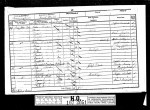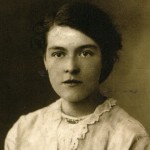I have been a uk genealogist since 1993, and have helped many American, Canadian and Australian people find their British ancestry.
Although previously based in Northamptonshire and offering mainly Northamptonshire searches, I am now offering a full British ancestry research service for a flat rate.
What are the benefits of my service?
If you have discovered British ancestry dating back from the 20th or 19th centuries, you may be able to partially trace these ancestors using online census records. However once you are past 1841, the main resources are parish registers, and the vast majority of these are only accessible via personal visits to local record offices.
You therefore have 2 choices: either travel to Britain and tour all the record offices where you ancestors might show up, or spend lots of time contacting different local genealogists, depending on where your ancestors lived.
Both of these choices can be extremely expensive and/or time-consuming.
With my service, you only ever need to deal with one person. I will carry out any further online research necessary and then hire any local genealogists that are needed. In some cases I may be able to do this at a discounted rate because I am a fellow genealogist – meaning that you get more research done for your money!
What Searches Do I Carry Out?
Once I have received your full details, including information about what searches you have already done yourself (I don’t want to waste your money by doing what you have already done!), I will decide what the next course of action should be, carry out any searches I can do myself, and contact the relevant genealogists in the areas where your ancestors lived (if they lived in Warwickshire, I will carry out these local searches myself).
The package will include some or all of the following:
- Birth, marriage and/or death certificates researched online and ordered online.
- All relevant census information researched online
- International Genealogical Index researched online as a preliminary to researching local sources.
- For all lines outside of Warwickshire, I will hire other genealogists to research local archives for parish register and other relevant sources.
- Any Warwickshire lines will be researched personally by me at the Warwickshire Record Office
- Full report typed up including all the work carried out and suggestions for further lines of research. * Photocopies and/or printouts of all relevant documents.
My flat fee for this service is £350
If for any reason it is not possible to continue researches due to lack of informaton or availability of resources, etc, the balance of the fee after the initial searches will be refunded.
To order this service I will need the following information:
- Your name, email address and postal address
- Where known, information about the line(s) you are tracing including, names, dates and places of birth, marriage and death, names of spouses, children and siblings.
- What searches you have already carried out, if any.
- Any specific information you wish to find out. Send this information (by an email attachment if preferred) to ros@writer-ros.co.uk.
Payment can be made via Paypal (there is a Paypal button on this website page) or bank transfer.
If you only need local searches in Warwickshire, I will carry this out at a fee of £15 per hour.



 Another first step will be to find out if there are any photographs of your ancestors that might be held by members of your family. Photography became popular from the 1840s. If you are lucky enough to find these, they are a fascinating resource. There is nothing like the thrill of looking into the eyes of a great-grandparent for the first time and seeing your own eyes looking back!
Another first step will be to find out if there are any photographs of your ancestors that might be held by members of your family. Photography became popular from the 1840s. If you are lucky enough to find these, they are a fascinating resource. There is nothing like the thrill of looking into the eyes of a great-grandparent for the first time and seeing your own eyes looking back!
